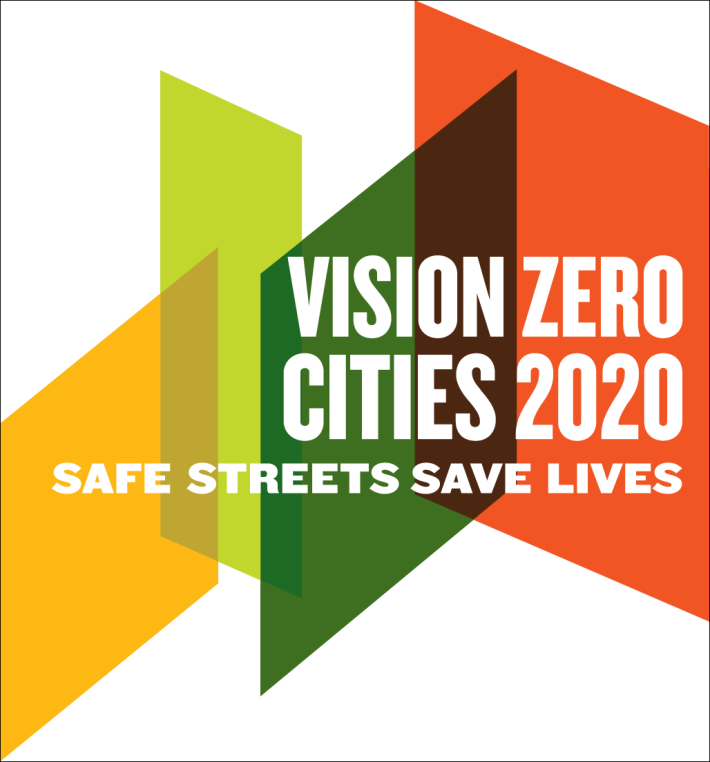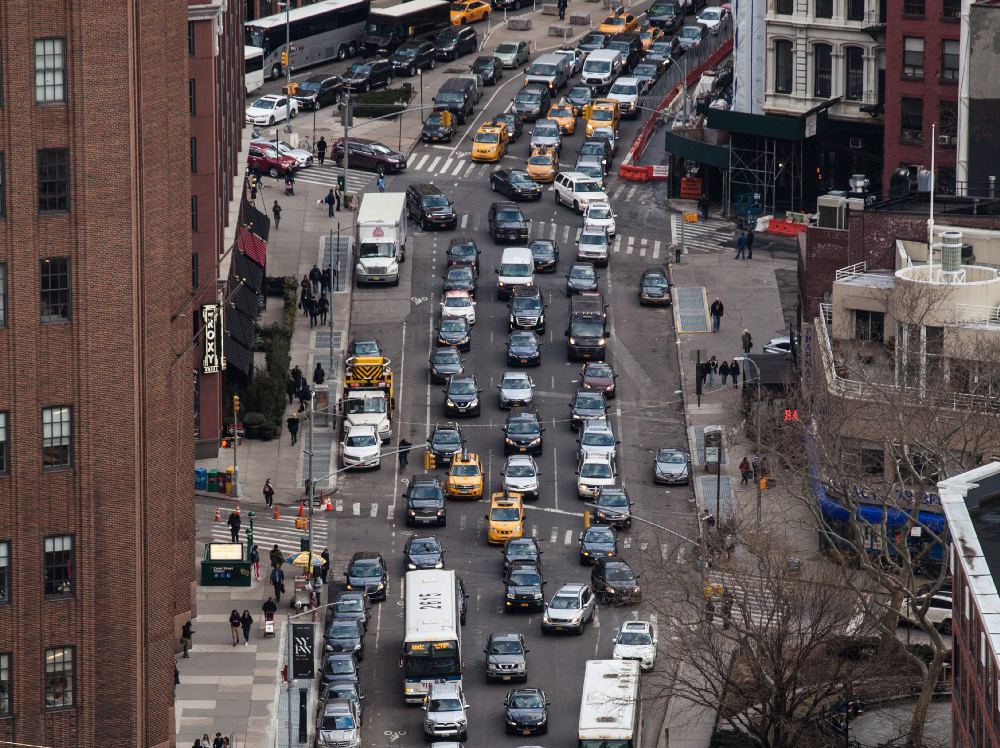This article will appear in Transportation Alternatives’ Vision Zero Cities Journal as part of the 2020 Vision Zero Cities Conference, Oct. 19-23. You can still register for the conference at visionzerocities.org.
In the past decade, the number of people killed inside cars has plummeted, while the number of people struck and killed while walking increased by 35 percent. Though overall roadway fatalities decreased slightly in 2017, the last two years on record (2016 and 2017) were the most deadly years for people killed by drivers while walking since 1990. Between 2008 and 2017, 49,340 people — 13 people per day, or one person every hour and 46 minutes — were killed while just walking on streets all across the United States. It’s the equivalent of a jumbo jet full of people crashing — with no survivors — every single month. And from preliminary data for recent years, it appears that this fatality rate is getting worse.

How could these two trends — one hopeful and the other incredibly disturbing — happen at the same time? While road safety is traditionally billed as a local issue, the root of the problem starts at the top, with federal transportation policy. The goal of our national transportation program isn’t connecting people to jobs, schools, grocery stores, and other necessities — it is making sure that drivers can drive their cars as fast as possible.
When the U.S. began designing and constructing the highway system in the 1950s, planners didn’t have the technology to measure the number of places that people could access from their homes by different modes. So they used a proxy measurement: vehicle speed. In the minds of policymakers, planners, and engineers, a transportation system where people could drive was soon equated with a system where people could get where they needed to go quickly. High speeds became a goal. At the same time, trips were made longer by building highways through communities, blocking formerly short trips, and by putting necessities like jobs, schools, groceries, and banks farther away. So, while roads were designed for people to drive faster, those people had to travel farther and took longer to get where they are going.
On local roads, prioritizing vehicle speed also made those roads dangerous. Drivers speeding through communities can see less and have a harder time avoiding a crash, and those crashes are also more likely to be deadly. We’ve documented examples of these communities in our report, Dangerous by Design and on the Transportation for America blog, but you can probably think of dozens of examples from your own life — because so much of the U.S. has been re-molded in this broken model.
The federal goal of high speed trickles down to local street design decisions, as states — which own large swaths of local roads — set design standards in order to best meet federal objectives and win more funding. This means that many seemingly local roads can be designed for vehicle speeds greater than is safe for areas where people will be walking and biking. These decisions can be made without a local government’s input — such as the case in Meridian, Mississippi, where the town’s Main Street was a state route designed for high speed, despite being the site of a thriving local retail corridor.
What does this mean for cities’ efforts to achieve Vision Zero? It means that without full power to redesign streets, the only way cities can influence vehicle speed is through speed limits — which isn’t as powerful a tool as design. Making streets safer through design was the only way that Oslo, Norway was able to achieve Vision Zero. Without changing street designs, cities don’t stand a chance at reducing the number of deaths on their roads.
The federal government spends tens of billions every year only to sacrifice human safety for vehicle speed. Protecting the safety of all people who use the street — especially the people walking and biking who are most vulnerable to being struck and killed — needs to be a higher priority for policymakers, and this priority must be reflected in the decisions we make about how to fund, design, operate, maintain, and measure the success of our roads.
Cities are better places to be when you can walk and bike. Streets designed to accommodate slow drivers, people walking and biking, and transit riders are better for businesses, save money on health care costs, and can help businesses attract and retain talent. And low-speed roads play a huge role in reducing carbon emissions because safer roads increase rates of biking, walking, and transit ridership, as well as enable fewer and shorter car trips.
Congress can make protecting the safety of all people who use the street a priority by reflecting this in the decisions they make about how to fund, design, operate, maintain, and measure the success of our roads. This starts with passing the Complete Streets Act of 2019, a bill that would set aside federal highway funds for Complete Streets projects and direct localities to adopt Complete Streets policies. The federal program should require designs and approaches that put safety — for everyone — first.
Beth Osborne serves as the director of Transportation for America, Smart Growth America’s transportation arm. She leads transportation policy development and technical assistance with departments of transportation. She was previously at the U.S. Department of Transportation, where she served as the Acting Assistant Secretary for Transportation Policy and the Deputy Assistant Secretary for Transportation Policy beginning in 2009. At USDOT, Osborne managed the TIGER Discretionary Grant program, the secretary’s livability initiative, the development of the Obama administration’s surface transportation authorization proposal, and the implementation of MAP-21.
Emiko Atherton is the former vice president for Thriving Communities and director of the National Complete Streets Coalition, a program of Smart Growth America. As vice president of Thriving Communities, Atherton oversaw SGA’s public health, community-driven engagement, placemaking and rural communities work. In her role as Director of the Coalition, Emiko oversaw the program’s overall strategy, federal advocacy, communications, research, and technical assistance programs. Emiko left SGA in July 2020 and is now the executive director of Social Venture Partners Seattle.






